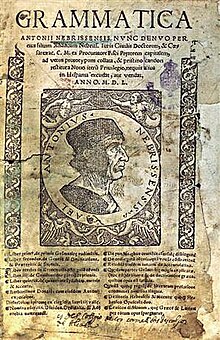Lebrija
Lebrija (Spanish pronunciation: [leˈβɾixa]) is a city and municipality of Spain located in the autonomous community of Andalusia, most specifically in the Province of Sevilla.
There has been human presence in the area since the Bronze Age, although the founding of Lebrija, possibly did not take place till the Phoenicians arrival, who baptised the settlement as Lepriptza, then to be renamed Nebrissa, during Tartessian times.
Originally, it was a port on the shores of the Lacus Ligustinus, a large inner lake surrounded by the Guadalquivir River and its tributaries and coastal sand bars to the South.
[3] Nebrishah was a strong and populous place during the period of Moorish domination (from 711); it was taken by King St Ferdinand in 1249, but again lost, and became finally subject to the Castilian crown only under Alfonso the Wise in 1264.
In the 1960s and 1970s, Lebrija, together with Jerez and Morón de la Frontera, became a focus of Jornalero protests (peasants without land) due to their poor living condition and expectations.
In 1982, the Spanish Socialist Workers' Party in charge of Lebrija City Council at the time bought the property and its restoration began.
It was reopened in 1986 as the "Casa de la Cultura", a place dedicated to learning, exhibits, and all sorts of cultural expressions, including dance and music.
It is a community activity where each neighborhood raises a cross, either using a permanent buttercross site or building them from scratch using flowers, forged iron or wood.
As in Seville and other Andalusian cities, towns, and villages, several hermandades, or religious brotherhoods, march in procession, carrying pasos, lifelike wood or plaster sculptures of individual scenes of the Passion of Jesus Christ or images of the Virgin Mary.


